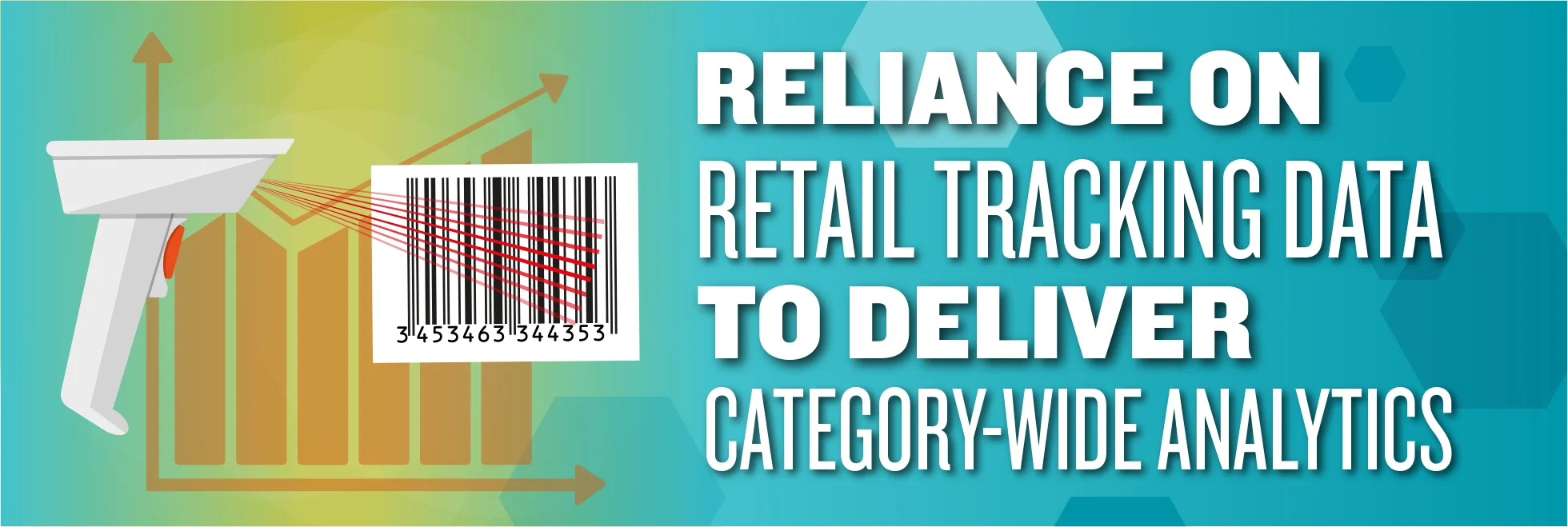 In a recent client meeting, a description of the CIA® methodology led to an in-depth conversation about the use of retail tracking data acquired via scanners in developed markets or audits in emerging markets. It was a great discussion and reminded me of several of the foundational ideas that led to the formation of Middlegame. This is an excellent topic for the blog to share or refresh the conversation on whether category-wide analytics require household panel data.
In a recent client meeting, a description of the CIA® methodology led to an in-depth conversation about the use of retail tracking data acquired via scanners in developed markets or audits in emerging markets. It was a great discussion and reminded me of several of the foundational ideas that led to the formation of Middlegame. This is an excellent topic for the blog to share or refresh the conversation on whether category-wide analytics require household panel data.
 The underlying technology for CIA® was developed to replicate household panel analytics when the more granular data was not available. We explained how important Fader & Hardie (1996) was to solving the “wide-angle view” problem in an earlier blog. Initially, we focused on retail tracking data to deploy our modelling platform and deliver the simulation capabilities for an entire category of competitive products. It was so much quicker to acquire this data leveraging third-party agreements through companies like IRI Worldwide, Nielsen, and TRAC among others.
The underlying technology for CIA® was developed to replicate household panel analytics when the more granular data was not available. We explained how important Fader & Hardie (1996) was to solving the “wide-angle view” problem in an earlier blog. Initially, we focused on retail tracking data to deploy our modelling platform and deliver the simulation capabilities for an entire category of competitive products. It was so much quicker to acquire this data leveraging third-party agreements through companies like IRI Worldwide, Nielsen, and TRAC among others.
Other suppliers suggested that these kinds of outputs required household panel data or some kind of survey instrument that provides respondent detail. The main issue for Middlegame was that the various household panels can be quite thin and carry limited statistical significance in terms of representing individual SKUs in a fairly narrow geography or limited time period. At the same time, items that are slow moving or represent dual-usage within a household can cause big problems for household-level analytics. However, there is a lot of promise by the way that InfoScout is leveraging modern technology and shopper habits to revolutionize panel analytics. I suggest you check out their blog to get a feel for what they do or send us a note to set up an introduction.
Household panel data is not usually existent in emerging markets, adding to the struggle to acquire such data. In developed markets, entire channels such as convenience or drug stores can be very problematic in the household panel. However, the data is readily available from a retail tracking perspective by geography, product, and time period. Although the audit data is not always perfect from a projection or coverage standpoint, it is widely accepted as a good relative measure of competition, i.e. market shares that are the core of our transferred demand approach. On a closing point, our current work in ecommerce also offers the same information and capabilities without privacy concerns.
Most often, Middlegame focuses on bringing assortment, pricing, and merchandising opportunities to light in emerging markets. The lack of any other competitive data makes the audit a “no-brainer.” However, in the recent conversation with the client, the importance of convenience stores to the brands that our client owned made the topic pointing to the “wide angle view” equally relevant. We have applied the CIA® methodology to a multitude of channels for our FMCG clients, including quantifying the effects of cross-channel attribution. Let us know if there is a way to apply our approach to your data.
Middlegame is the only ROMI consultancy of its kind that offers a holistic view of the implications of resource allocation and investment in the marketplace. Our approach to scenario-planning differs from other marketing analytics providers by addressing the anticipated outcome for every SKU (your portfolio and your competitors’) in every channel. Similar to the pieces in chess, each stakeholder can now evaluate the trade-offs of potential choices and collectively apply them to create win-win results.
